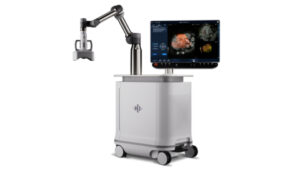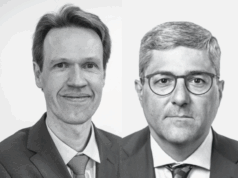 HistoSonics has announced the company’s initial partnership in Asia with Hong Kong University receiving their first histotripsy system following a donation from the Li Ka Shing Foundation.
HistoSonics has announced the company’s initial partnership in Asia with Hong Kong University receiving their first histotripsy system following a donation from the Li Ka Shing Foundation.
The foundation, led by its founder Li Ka-shing, is a global philanthropic organisation with a focused effort in Hong Kong, and is responsible to date for over HK$30 billion in projects involving education, medical services, charity, and anti-poverty programmes, a recent press release states.
As part of the foundation’s focus on bringing innovative medical advancements to Hong Kong, the foundation provided the capital to acquire two initial histotripsy systems to the leading public hospitals in Hong Kong, one each to the University of Hong Kong and the Chinese University of Hong Kong. The Chinese University of Hong Kong will receive the second histotripsy system early next year to complete the initial gift from Li.
“We could not be more excited to partner with these two prestigious university hospitals to be the first in Hong Kong to offer our novel therapy to their patients,” said Mike Blue, HistoSonics chief executive officer (CEO) and president.
Histotripsy is a novel form of focused ultrasound that uses high amplitude, very short pulses to create a “bubble cloud” that is designed to mechanically destroy and liquefy targeted liver tumours. These bubble clouds form and collapse in microseconds, creating mechanical forces strong enough to destroy tissue at cellular and sub-cellular levels in a non-invasive and non-thermal method. Histotripsy offers an alternative for patients with liver tumours to avoid certain side effects like surgical site infections, bleeding, and radiation toxicity common to other treatments such as surgery and radiation therapy.
The company believes that the novel mechanism of action of their proprietary technology may provide significant advantages to patients, including the ability of the treatment site to recover and resorb quickly. Li commented that “treating tumours using the HistoSonics histotripsy system by forming microbubbles is fascinating,” and believes medical research and innovation can bring hope and economic prospects to the city.
Experts in liver treatment from the University of Hong Kong and the Chinese University of Hong Kong recently underwent training at HistoSonics headquarters in Minneapolis, USA, and expect to begin treating patients as early as this week. “We could not be more excited to partner with these two prestigious university hospitals to be the first in Hong Kong to offer our novel therapy to their patients,” said Blue. “Unfortunately, Asia carries a substantial proportion of the world’s population suffering from diseases that cause liver tumours and based on the experiences from our US launch we are confident that we can begin to make an immediate impact on the quality of life of many of the patients who need it most in this region. We are very grateful for the foundation’s very generous gift and Li’s personal interest in helping patients in Hong Kong,” added Blue. Both Hong Kong-based hospitals will be eligible to enrol patients in HistoSonics’ prospective study and post market clinical programme, called BOOMBOX, which aims to collect data across a broad number of clinical use cases, and liver tumour pathologies, observing the use of histotripsy across all stages of liver disease.
The Edison histotripsy system is indicated for the non-invasive destruction of liver tumours, including unresectable liver tumours, using a non-thermal, mechanical process of focused ultrasound.











